© 2025 MJH Life Sciences™ , Patient Care Online – Primary Care News and Clinical Resources. All rights reserved.
What Young People are Drinking: A 10-question Quiz
Sample: Which beverage accounted for the largest percentage of total beverage consumption among US youth? Milk? Water? The answer might surprise you.

Because beverage choices can affect diet quality and total calorie intake, a recent report described the contributions of various beverage types to total beverage consumption among US youth.
Previous reports focused on beverages that contain sugar or calories. The new report looked at consumption of all types of beverages in terms of amount (grams) rather than calories with National Health and Nutrition Examination Survey data for the years 2013–2016.
Take this brief quiz above to test your knowledge of the current beverage drinking patterns of American youth.
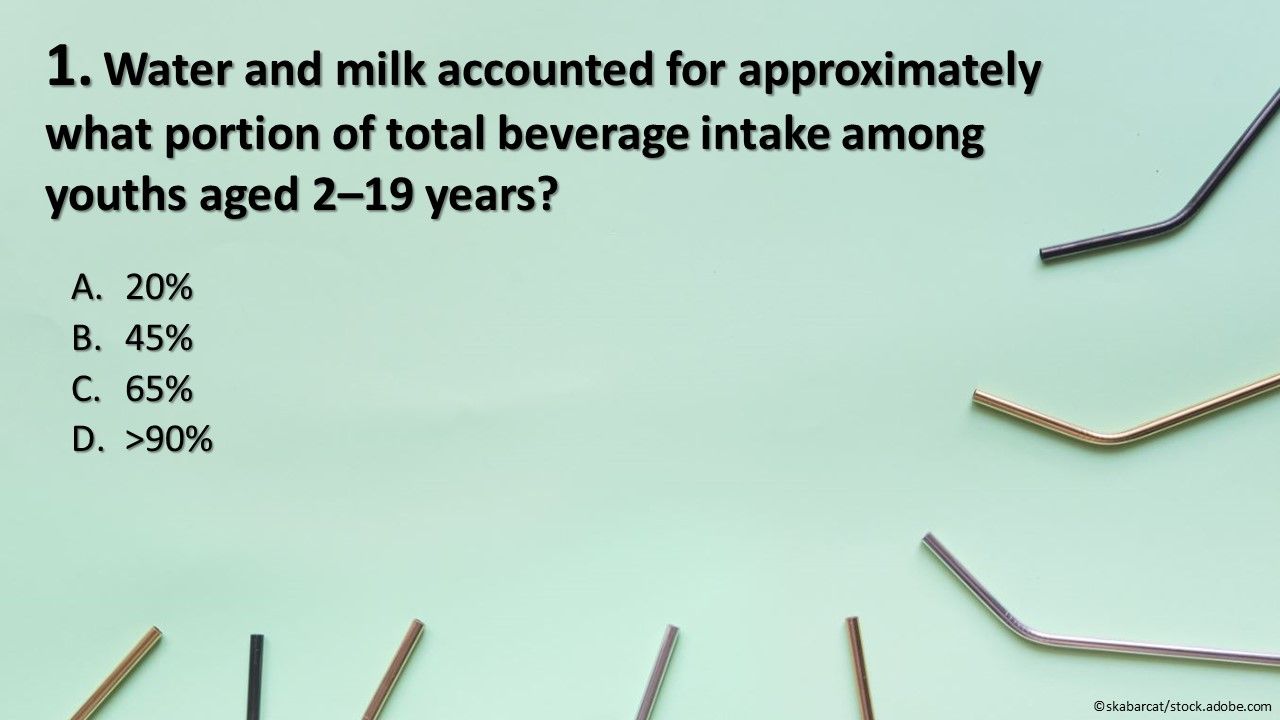
Question 1. Water and milk accounted for approximately what portion of total beverage intake among youths aged 2-19 years?

Answer: C. 65%. Water (43.7%) and milk (21.5%) combined accounted for approximately 65% of total beverage intake among youth aged 2-19 years.
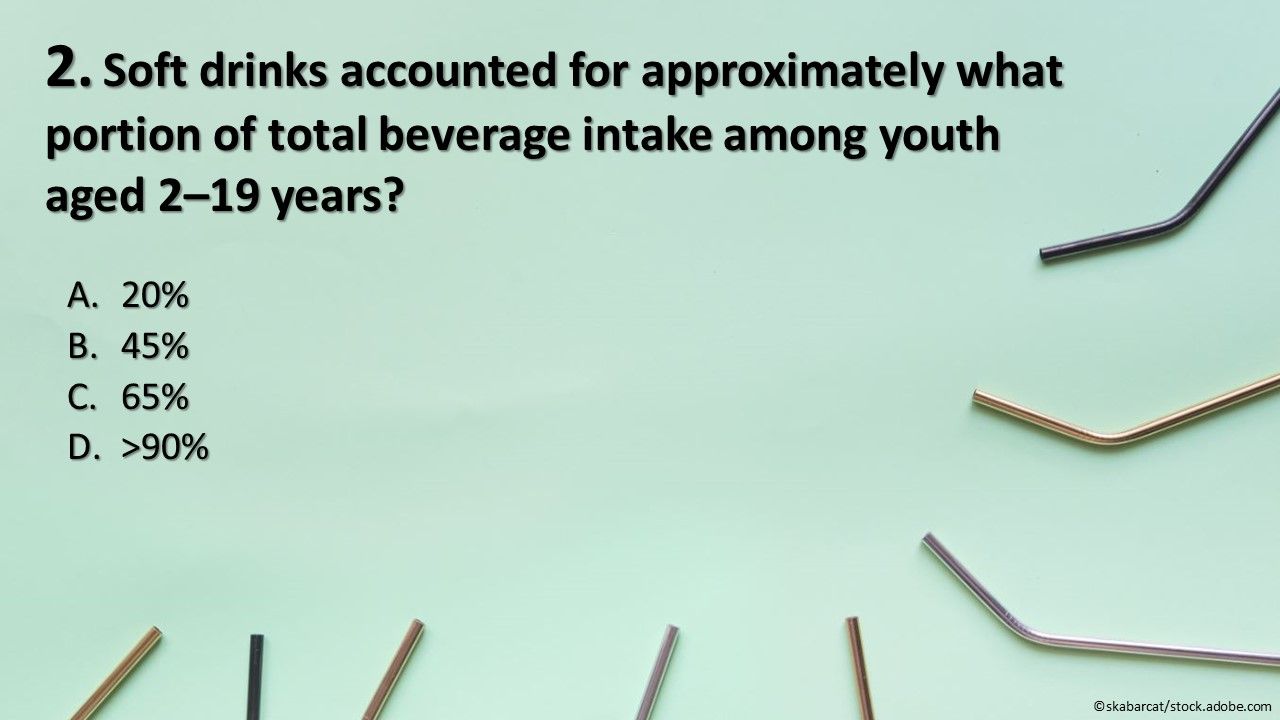
Question 2. Soft drinks accounted for approximately what portion of total beverage intake among youth aged 2-19 years?
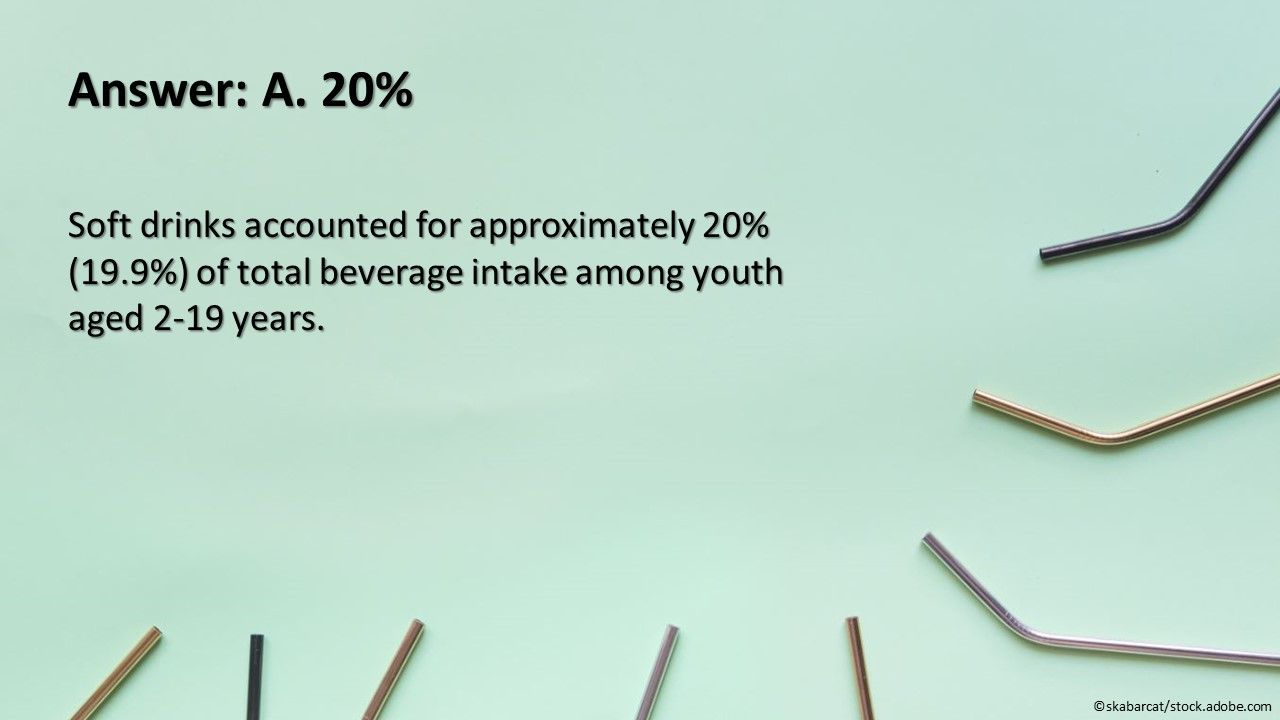
Answer: A. 20%. Soft drinks accounted for approximately 20% (19.9%) of total beverage intake among youth aged 2-19 years.

Question 3. Which beverage accounted for the largest percentage of total beverage consumption among US youth?

Answer: C. Water. Water accounted for the largest percentage of total beverage consumption (43.7%) among US youth, followed by milk (21.5%), soft drinks (19.9%), 100% juice (7.3%), and other beverages (7.6%).

Question 4. How did young persons' sex affect the contributions of various beverages to total beverage consumption?
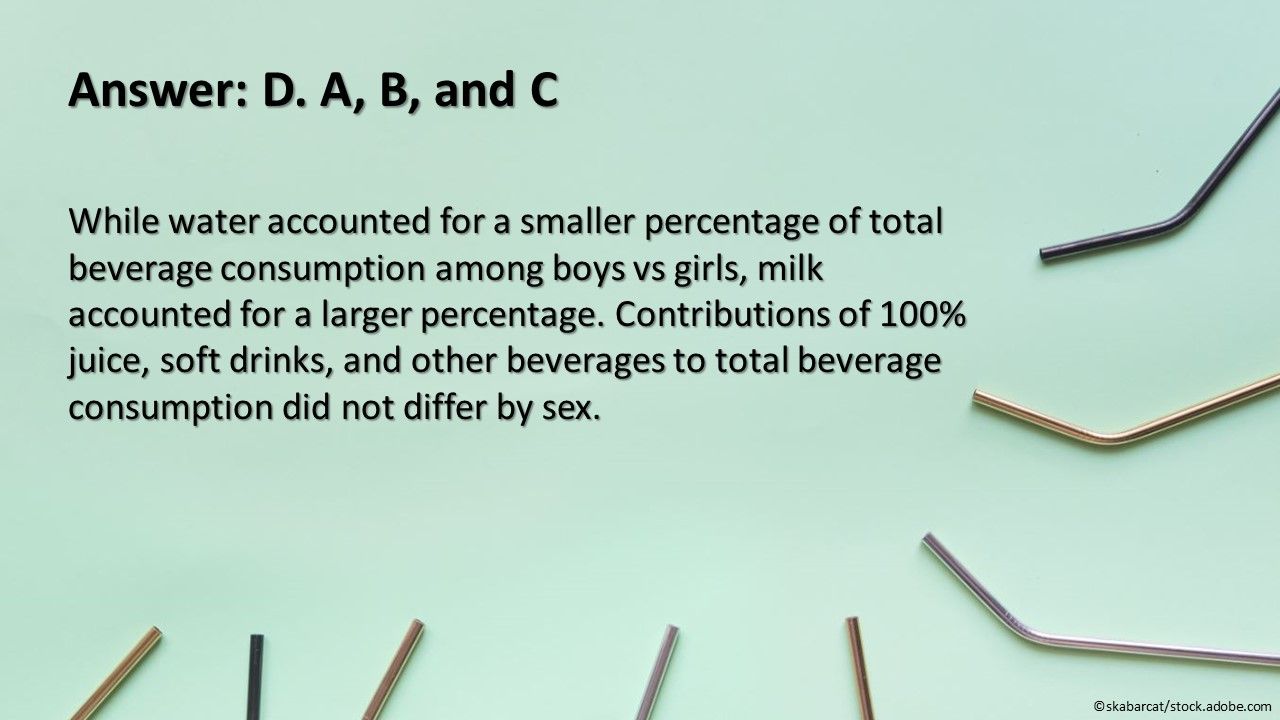
Answer: D. A, B, and C. While water accounted for a smaller percentage of total beverage consumption among boys vs girls, milk accounted for a larger percentage. Contributions of 100% juice, soft drinks, and other beverages to total beverage consumption did not differ by sex.

Question 5. True or false? The contribution of milk to total beverage consumption increased with age, among those aged 2-5 years.
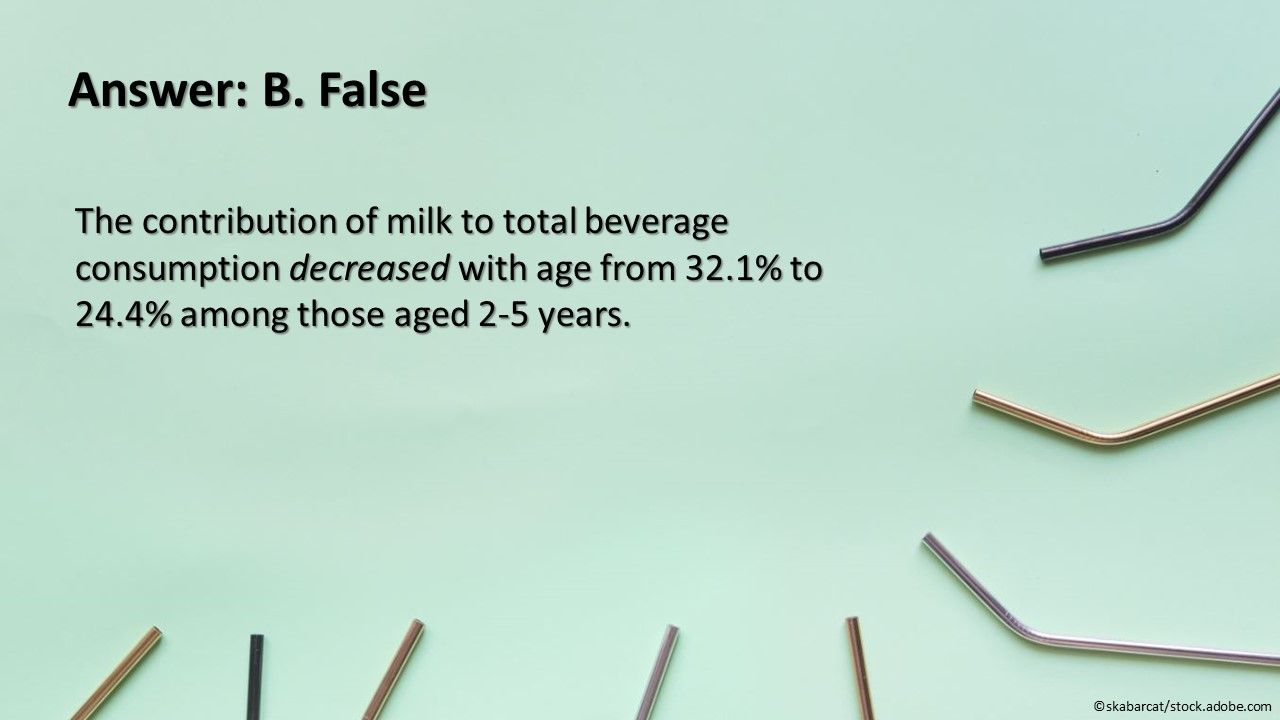
Answer: B. False. The contribution of milk to total beverage consumption decreased with age from 32.1% to 24.4% among those aged 2-5 years.

Question 6. The contribution of water to total beverage consumption was greatest among youth of which race?

Answer: A. Non-Hispanic Asian. Water contributed to 55.4% of total beverage consumption among non-Hispanic Asian youth vs 46.0% among non-Hispanic white, 40.4% among Hispanic, and 37.6% among non-Hispanic black youth.
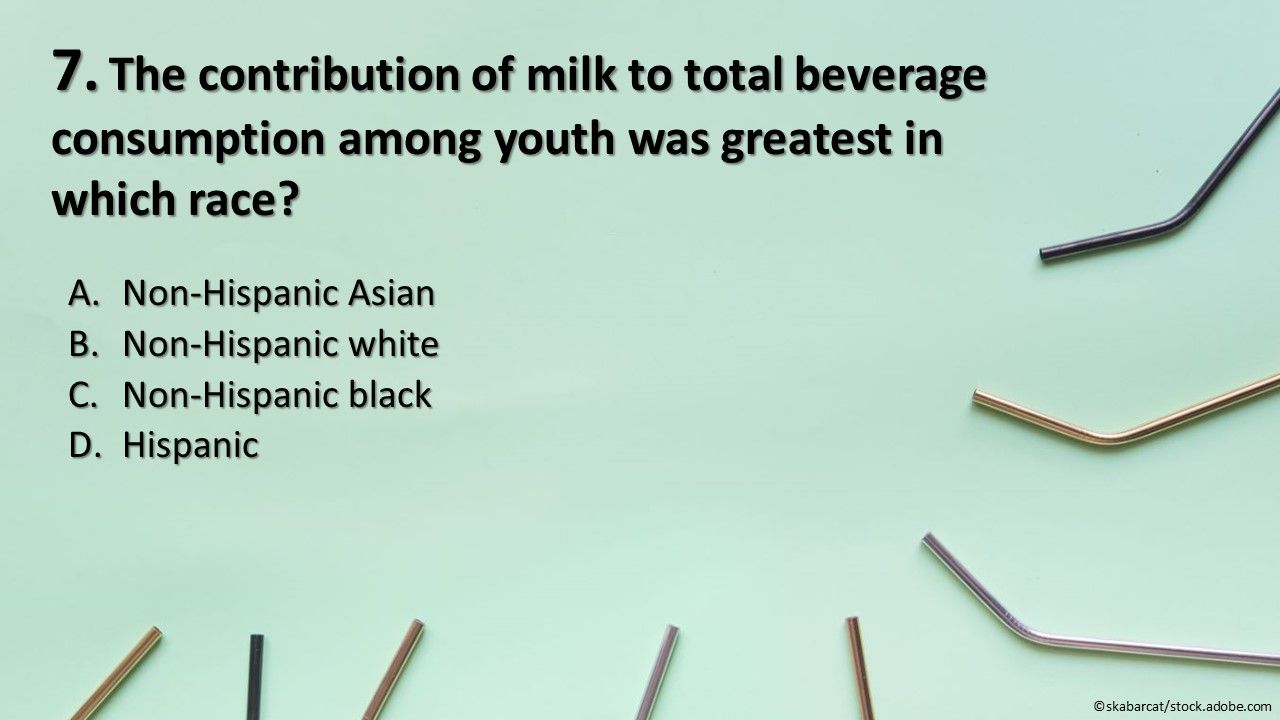
Question 7. The contribution of milk to total beverage consumption among youth was greatest in which race?

Answer: A. Non-Hispanic Asian. Milk accounted for 25.2% of total beverage intake among non-Hispanic Asian youth, followed by 22.4% among non-Hispanic white, 21.8% among Hispanic, and 16.4% among non-Hispanic black youth.
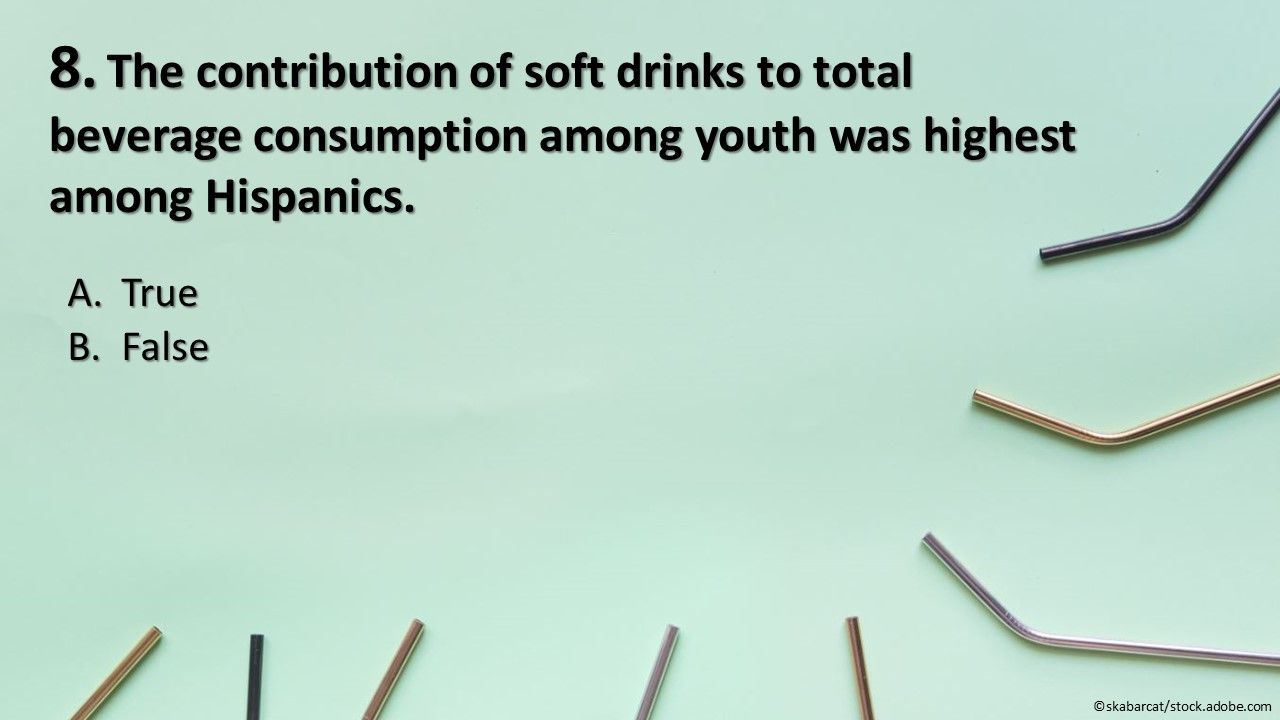
Question 8. True or false? The contribution of soft drinks to total beverage consumption among youth was highest among Hispanics.

Answer: B. False. The contribution of soft drinks to total beverage consumption among youth was highest among non-Hispanic blacks (30.4%).
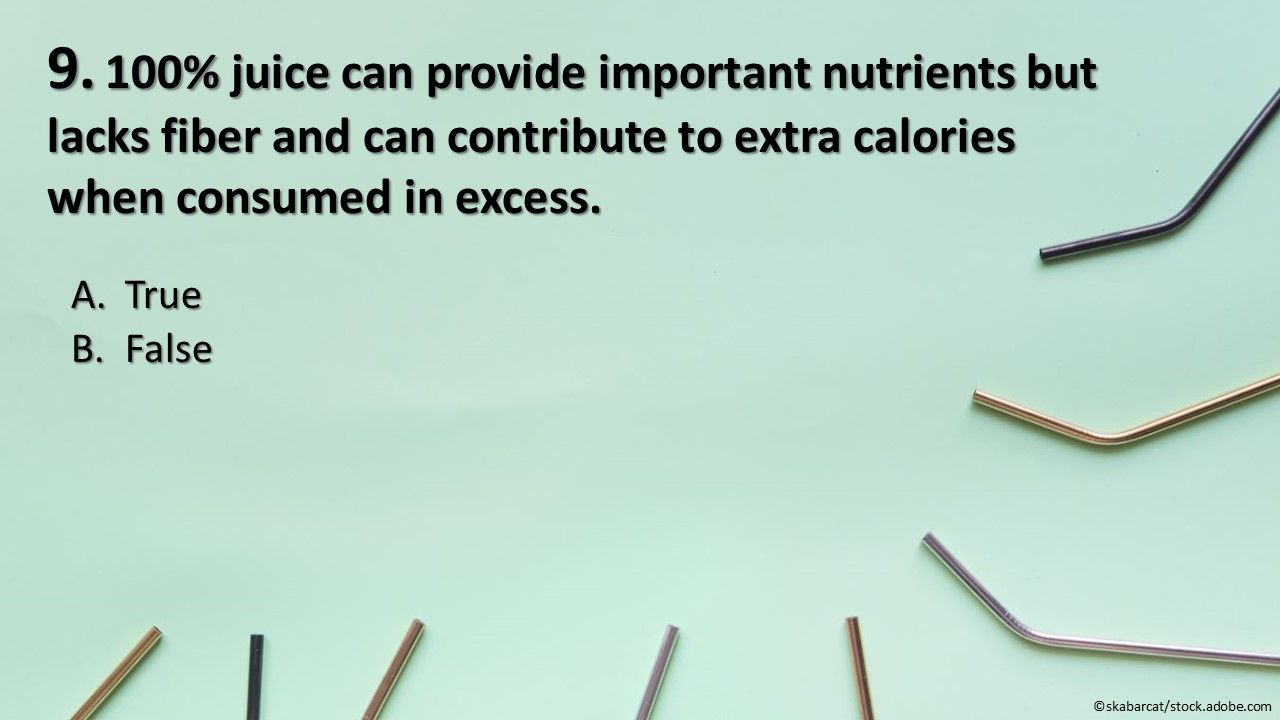
Question 9. True or false? 100% juice can provide important nutrients but lacks fiber and can contribute to extra calories when consumed in excess.
If you would like more information on any of the questions, the original article, Beverage Consumption Among Youth in the United States, 2013â2016, can be found here.



